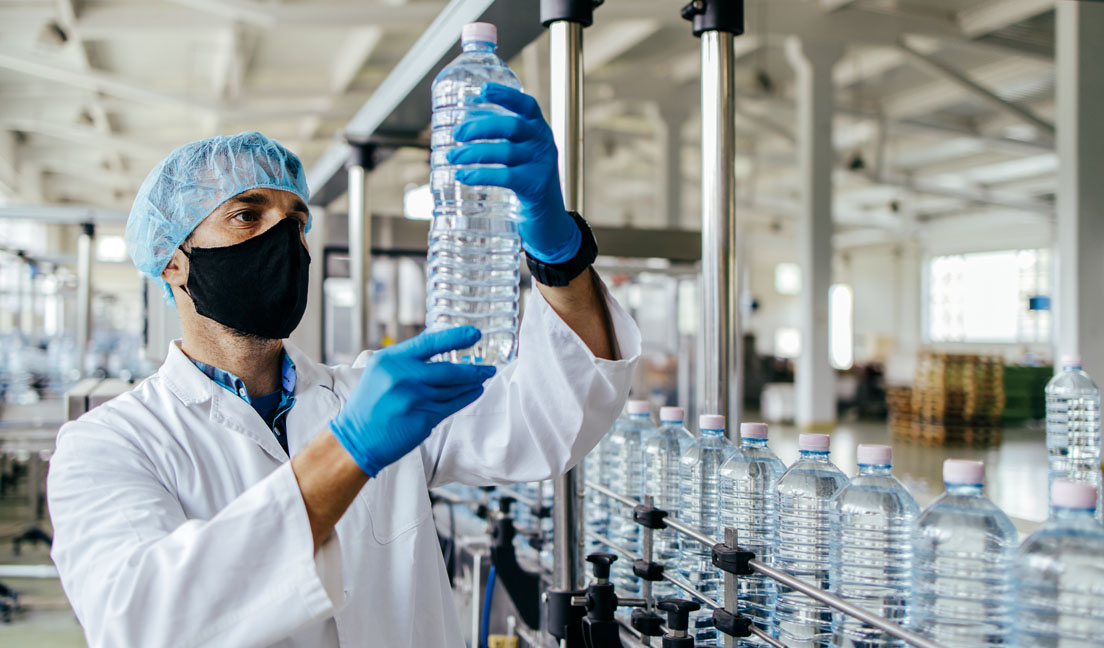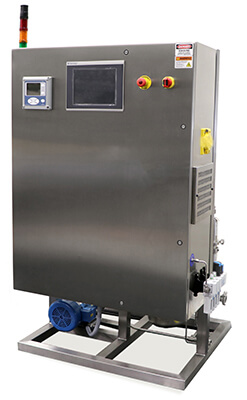Amid the COVID-19 crisis, the global market for Food and Beverage (F & B) disinfection - estimated at $148.9 million last year - is projected to grow to $191.8 million by 2027[1]. With those kinds of numbers as a backdrop, the virtues of ozone systems for the F & B sector, providing residual-free disinfection, oxidation and sanitisation, are increasingly of interest.

Why is it gaining popularity?
Ozone is one of the most powerful commercially-available oxidizing and disinfecting agents. Ozone gas quickly dissolves in water, makes contact with wetted surfaces, and then decomposes back to oxygen in solution, leaving no residuals in the treatment stream. And it’s safe.
Ask any F & B production manager their greatest fear, and almost every single one would say bacterial contamination, which can result in product recalls, plant shut down and long-lasting reputational damage. No business can afford that. Hygiene and disinfection of food-contact surfaces and equipment is therefore paramount.
F & B facilities have typically used chlorinated water not only for cleaning in place (CIP) procedures, but for manually washing down working surfaces, conveyors and other items of equipment which are not covered by CIP.
Ozone has proved a to be an alternative disinfection solution in applications where residual disinfection isn’t required.
Ozone dissolves in water forming a very powerful antimicrobial agent. Produced from oxygen using electrolysis (a high-frequency silent electrical discharge), ozone has been used for the disinfection of drinking water for well over a hundred years. Ozone generator systems are easy to install and operate and can naturally produce the ozone for disinfection with just air and electricity.
Ozone isn’t new to the food processing industry either.
One study from the late nineties[2] showed the effect of dissolved ozone in a batch reactor on Listeria monocytogenes. Dissolved ozone at 0.4 and 0.8mg/l inactivated 4.6 and 5.7 log CFU/ml within 30 seconds. A later study[3] demonstrated that higher dissolved ozone concentrations gave immediate inactivation of the bacterium. The implementation of the ozone in these applications simplifies the disinfection process while still delivering a measurable and effective solution.
A major benefit of ozone for the food industry is that it decomposes rapidly to form oxygen, leaving no residues. When necessary, ozone generators can be paired with UV, such as Evoqua’s Wafer™ systems, for rapid destruct.
For greater flexibility and portable point of use Evoqua has included in its proven ozone range a small, transportable system - the PC Series disinfection system - that can provide ozonated water instantaneously anywhere in the production facility simply by connecting it to power and a water supply.
In addition to the mobile ozone range for manual washdown, Evoqua’s fixed ozonation systems are easily integrated into CIP and product water systems.

PGS Series Packaged Ozone Generators System
Our new range including the PC Series and the compact skid designed PGS Series incorporate an on-board oil-free air compressor which delivers air to an oxygen concentrator. This passes through an air-cooled ozone reactor with adjustable output. The ozone gas is then injected and dissolved into the flow of water delivered by an integral booster pump to a connected hose and nozzle system. It also includes an off-gas destructor to ensure that no ozone gas is discharged into the workplace.
These solutions now come with our latest innovative technology, Powertron™ power supply, aimed at helping you maximize your operational efficiency by providing a new method to control power for precision O3 output that uses less energy.
Bottom line
Ozonated water is highly effective, especially where there is evidence of bacterial resistance, where no residual is required, and taste and odour of the finished product cannot be affected. Ozone can be easily applied to equipment and work surfaces in all food and beverage sectors from brewing, wine-making and bottled water through to vegetable packaging and cake making. Evoqua’s Ozone generator systems will provide years of trouble-free operation, providing a solution for today and tomorrow through SIMPLE. PROVEN. OZONE TECHNOLOGY.
[1] https://bit.ly/3k06RYU
[2] Kim J G et al Application of ozone for enhancing the microbiological safety and quality of foods: a review J Food Prod. 1999 Sep;62(9):1071-87.
[3] Kim JG, Yousef AE. Inactivation kinetics of foodborne spoilage and pathogenic bacteria by ozone. J Food Sci 2000 65:521-528
